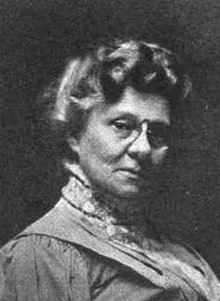
Paulus Hook is a community on the Hudson River waterfront in Jersey City, New Jersey. It is located one mile across the river from Manhattan. The name Hook comes from the Dutch word "hoeck", which translates to "point of land." This "point of land" has been described as an elevated area, the location of which today is bounded by Montgomery, Hudson, Dudley and Van Vorst Streets. The neighborhood's main street is the north- and south-running Washington Street. The waterfront of Paulus Hook is located along the basin of the Morris Canal in a park with a segment of Liberty State Park. The Hudson-Bergen Light Rail has a Paulus Hook stop at Essex Street and the Liberty Water Taxi at Warren Street. The introduction of the light rail and development of office buildings on the Hudson Waterfront have brought more businesses to Morris Street including a number of restaurants with outdoor seating and small neighborhood shops.
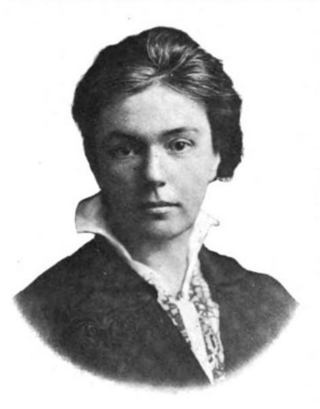
Mary Philbrook (1872-1958) was the first female attorney in New Jersey, and the first female to be admitted to the bar association in New Jersey. The New Jersey Supreme Court initially refused Philbrook's petition in 1894 on the grounds that no other woman in the state had ever sought admission to the bar. Supporting the New Jersey Woman Suffrage Association, she lobbied in the New Jersey legislature to allow women to practice law. She was finally admitted to the bar in 1895. She used her legal training for the advancement of women's rights, the social settlement movement in Jersey City, and the gender-free writing of the New Jersey Constitution of 1947. As a result, she is known as a prominent New Jersey woman in the fight for equal rights
The Labour Church was an organization intended to give expression to the religion of the labour movement. It had a Christian socialist outlook, specifically called theological socialism.
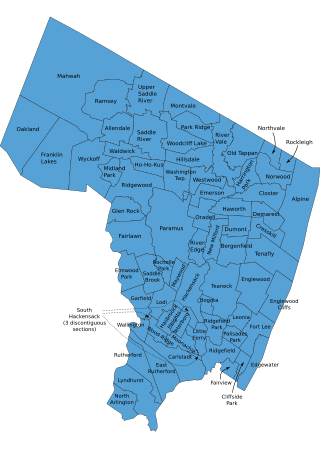
Boroughitis was the creation in the 1890s, usually by referendum, of large numbers of small boroughs in the U.S. state of New Jersey, particularly in Bergen County. Attempts by the New Jersey Legislature to reform local government and school systems led to the breakup of most of Bergen County's townships into small boroughs, which still balkanize the state's political map. This occurred following the development of commuter suburbs in New Jersey, residents of which wanted more government services, whereas the long-time rural population feared the increases in taxation that would result.

Women's Health Protective Association was a US women's organization focused on improving a city's public health and protecting the immediate neighborhood. It was founded in New York City in November 1884 as the Ladies' Health Protective Association.
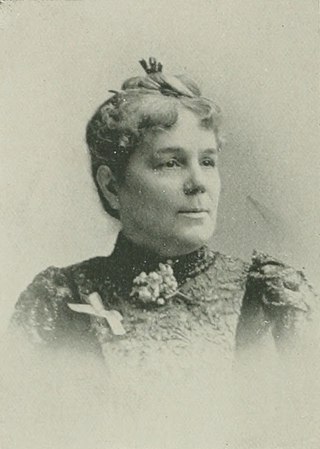
Mary Towne Burt was a 19th-century American temperance reformer, newspaper publisher, and benefactor from Ohio. Burt was identified with temperance work nearly all her life. She was the first president of the Auburn, New York branch of the Women's Christian Temperance Union, and beginning in 1882, served as president of the New York State Society of the Union. In 1875, she became the publisher, and subsequently the editor, of Our Union, the organ of the society, and in 1878–80 was the corresponding secretary of the National Union. For several years, Burt had charge of the legislative interests of the union, and several laws for the protection of women and young girls resulted from her efforts.

Cornelia Foster Bradford was an American philanthropist and social reformer. She established a settlement house in Jersey City, New Jersey, in 1894.

The College Settlements Association (CSA) was an American organization founded during the settlement movement era which provided support and control of college settlements for women. Organized February 1890, it was incorporated on January 5, 1894. The settlement houses were established by college women, were controlled by college women, and had a majority of college women as residents. The CSA was devised to unite college women in the trend of a modern movement, to touch them with a common sympathy, and to inspire them with a common ideal. It was believed that young students should be quickened in their years of vague aspiration and purely speculative energy by possessing a share in this broad practical work.

Settlement and community houses in the United States were a vital part of the settlement movement, a progressive social movement that began in the mid-19th century in London with the intention of improving the quality of life in poor urban areas through education initiatives, food and shelter provisions, and assimilation and naturalization assistance.

Rivington Street Settlement was an American settlement house which provided educational and social services on the Lower East Side of the Manhattan borough of New York City, New York. Under the auspices of the College Settlements Association (CSA), it focused on the mostly immigrant population of the neighborhood. Originally located at 95 Rivington Street (1889-), other locations later included 96 Rivington Street (1892-1901), 188 Ludlow Street (1902–), 84-86 First Street (1907-), and Summer Home, Mount Ivy, New York (1900-). The Rivington Street Settlement was established by college women, was controlled by college women, and had a majority of college women as residents. The Rivington Street Settlement was a kind of graduate school in economics and sociology, with practical lessons in a tenement–house district - a kind of sociological laboratory.

Casa de Castelar was an American settlement in Los Angeles, California. It was founded in February 1894, during the settlement movement era, by a local branch of the College Settlements Association called the Los Angeles Settlement Association (LASA). Casa de Castelar was the first settlement house in the city, and the first settlement house west of the Mississippi River.

Orange Valley Social Institute was an American settlement house established during the settlement movement era to provide educational and social opportunities for the people of the neighborhood. It was located close to Newark in The Oranges' hatting district at No. 35 Tompkins street, Orange Valley, New Jersey. Opened April 1, 1897, under the auspices of a committee of citizens of Orange, New Jersey, it was later governed by a Board of Directors of the Settlement Association. It was maintained by private contributions. Head residents included Bryant Venable, The settlement contained a kindergarten, boys' games club, basket weaving club, shuffleboard club, mothers' meetings, chair caning club, bowling club and a library. In the first nine months of 1902, 497 persons borrowed 3,568 books, while there was an average daily attendance of about 30 at the reading rooms.

Goodrich Social Settlement was the second settlement house in Cleveland, Ohio, after Hiram House. It organized on December 9, 1896, incorporated May 15, 1897, and opened May 20, 1897 at Bond St. and St. Clair Ave. It was established by Flora Stone Mather as an outgrowth of a boys' club and women's guild conducted by the First Presbyterian Church. Its aims were “to provide a center for such activities as are commonly associated with Christian social settlement work". It was maintained by an endowment. The Goodrich House Farm, in Euclid Point, Ohio, was part of the settlement.

University of Chicago Settlement was a settlement of the University of Chicago. It was established January, 1894, by the Philanthropic Committee of the Christian Union of the University of Chicago. Initially, two graduate students were in residence "to provide a center for educational, religious and philanthropic work." Mary McDowell became head resident September 15, 1894.
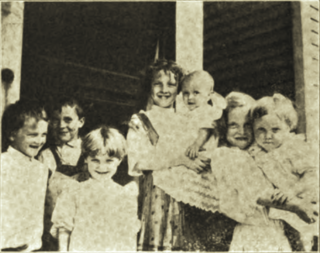
Neighborhood House was an American settlement house in Chicago, Illinois. It was opened in October 1896, by Samuel S. and Harriet M. Van Der Vaart, under the auspices of the Young People's Society of the Universalist Church, of Englewood, Chicago, and with the assistance of teachers of the Perkins, Bass, and D. S. Wentworth public schools. It was officially established in the Fall of 1897 by Harriet Van Der Vaart as the outgrowth of the kindergarten opened the year before "to bring together for mutual benefit people of different classes and conditions."
Neighborhood House is an American community center located in Louisville, Kentucky. Founded in 1896, as North Broadway Social Settlement it was renamed Neighborhood House in 1902, when it incorporated.

Lawrence House was an American social settlement in Baltimore, Maryland. Its beginnings were in 1893, when Rev. Dr. Edward A. Lawrence and a friend took up lodging at 214 Parkin Street. Lawrence died suddenly later in 1893, and in his memory, the Lawrence Memorial Association organized in 1894 and purchased a house at 816 West Lombard Street. The settlement incorporated in the Fall of 1900. In 1904, the place was enlarged by the addition of the adjoining house, 814 West Lombard Street.

South Park Settlement was an American settlement movement-era settlement established in the South Park neighborhood of San Francisco, California on January 2, 1895, by the San Francisco Settlement Association. It was founded in one of the crowded districts of San Francisco. The pretty little oval park on which the Settlement House faces was formerly the fashionable residence district of the city. But within a few blocks on either side of South Park were many little streets, whose crowded tenements furnished homes for less prosperous working people. Its goals were to establish and maintain a settlement in San Francisco as a residence for persons interested in the social and moral condition of its neighborhood; to bring into friendly and helpful relations with one another the people of the neighborhood in which the settlement was situated; to cooperate with church, educational, charitable and labor organizations, and with other agencies acting for the improvement of social conditions; to serve as a medium among the different social elements of the city for bringing about a more intelligent and systematic understanding of their mutual obligations; as well as to do social and educational work in the neighborhood; co-operate in the civic work of the city; and investigate social and economic conditions.

Sibylla Bailey Crane was an American educator, musical composer, and author. Her benevolent work included that of the church, the educational institutions of Massachusetts, the general theological library, and the prisons and reformatory schools of the state. She was prominent in musical and social circles and in various patriotic and other organizations, and contributed liberally for the advancement of many worthy objects. Crane was the author of a volume entitled, Glimpses of the Old World.
Amity Church Settlement was an American settlement house founded in 1896 and auxiliary to Amity Baptist Church. It was located at 314 West 54th Street in the Manhattan borough of New York City, New York. Its purpose included the religious and social well-being of the neighborhood. Services included educational classes, lectures, and poor relief. The director was Rev. Leighton Williams, Pastor. The undenominational spirit and able management of the House attracted confidence and financial assistance from outside Baptist lines. Its basal function was that of establishing residence in the crowded neighborhood where its work lay and bringing to bear upon the labor in hand the influence of the home. It sought to unite the idea of the Church and of the social settlement. The settlement was unincorporated, and was maintained by Amity Baptist Church and by voluntary contributions. The work was classified as (1) religious, including the various church services; (2) educational, including kindergarten, industrial school, evening classes, public lectures under the board of education; (3) medical, including dispensary and nursing work; (4) social, including Workingmen's Institute, social clubs and entertainments; (5) relief work; and (6) neighborhood work, including visitation and all work outside of the building, as well as promotion of neighborhood interests.
